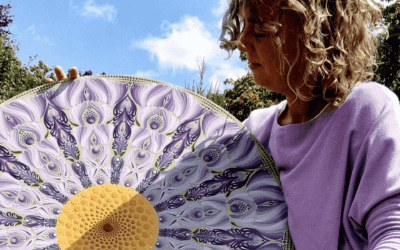Mandalas have a history stretching back thousands of years. They can be found in a range of different cultures and religions and have developed over time from spiritual symbols into artistic and therapeutic tools. Their meaning has expanded over the centuries, but the basic idea – a circular pattern that expresses order and harmony – remains unchanged.
The origins of the mandala
The word ‘mandala’ comes from Sanskrit and means ‘circle’ or ‘centre’. It is first mentioned in the Vedic scriptures of India, which are over 3,000 years old. In the Hindu tradition, the mandala symbolises the cosmos and is often used as a visualisation aid in rituals and meditation. The circular patterns represent the order of the universe and serve as a link between the macrocosm (universe) and the microcosm (individual).
Mandalas in Buddhism
In Tibetan Buddhism, mandalas have a central spiritual significance. They are frequently used in meditation and ritual practices. Particularly well known are the sand mandalas that monks create in elaborate work from coloured sand. The filigree patterns require the utmost precision and often symbolise cosmic palaces or spiritual journeys. After their completion, the mandalas are ritually destroyed to illustrate the impermanence of life and all things.
Mandalas in other cultures
Similar circular patterns can be found in many cultures around the world, although they are not always referred to as ‘mandalas’.
Christian art
In medieval Christian architecture, mandala-like structures appear in the form of rose windows. These windows, as seen in Gothic cathedrals, are composed of symmetrical circles and coloured glass. They often symbolise the divine or the unity of creation.
Native American cultures
The Navajo Native Americans create sand paintings that are similar to Tibetan sand mandalas. These artworks are often used during healing ceremonies and carry spiritual meanings.
Islamic geometry
Symmetrical and circular patterns play a major role in Islamic art. These patterns, which are often found in mosques or on manuscripts, emphasise harmony, infinity and divine order.
Mandalas in the Western hemisphere
With the global spread of Eastern philosophies in the 19th and 20th centuries, mandalas found their way into Western culture. The psychologist Carl Gustav Jung was particularly influential in integrating mandalas into his work. He saw them as a symbol of inner order and the self. Jung had his patients draw mandalas to better understand psychological processes and support their healing.
In modern art, mandalas have gained popularity. Artists use them to express creativity, harmony and symmetry. Mandalas are also frequently used in therapeutic contexts, e.g. in art therapy to reduce stress or promote concentration.
The role of mandalas today
Today, mandalas can be found in many areas of everyday life: as works of art, meditation aids, designs in colouring books or as tattoos. Their universal symbolism and timeless aesthetics appeal to people in different walks of life.
Mandalas are also used as mindfulness tools. Whether you are looking at a finished work of art or painting a mandala yourself, they can help you to focus your mind and find inner peace.
The history of mandalas shows how far their roots go and how diversely they are used. Whether in religious ceremonies, healing rituals or modern art – mandalas connect cultures, epochs and people.
If you are fascinated by mandalas and would like to integrate them into your daily life, there are many ways to do so: as a piece of art in your home, as a tool for meditation or as a creative hobby.







0 Comments